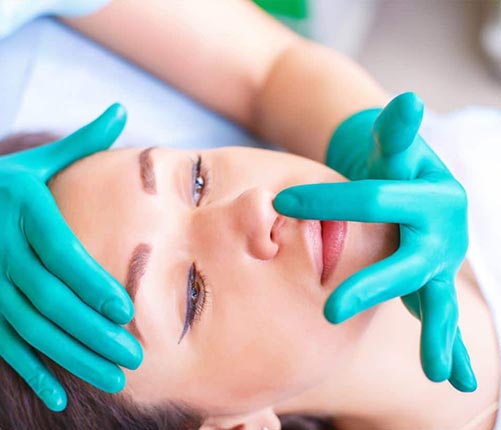Rhinoplasty is one of the most popular cosmetic surgeries worldwide. It is known as a nose job and performed to enhance the appearance of the nose or improve its function.
- Operations
Real People, Real Results
Rhinoplasty is one of the most popular cosmetic surgeries worldwide. It is known as a nose job and performed to enhance the appearance of the nose or improve its function.
People seek rhinoplasty for various reasons, including correcting nasal asymmetry, refining the shape or size of the nose, improving breathing problems, or repairing damage from injury or birth defects.
Many people seek rhinoplasty to address aesthetic concerns about the appearance of their noses. Whether it's a prominent bump on the bridge, a wide or drooping nasal tip, or a nose that feels out of proportion with the rest of their facial features.
In addition to cosmetic issues, rhinoplasty can also correct structural abnormalities that impede nasal function. Conditions such as a deviated septum, nasal valve collapse, or congenital malformations can lead to breathing difficulties, chronic congestion, and discomfort.
Moreover, rhinoplasty is often sought to address nasal issues resulting from trauma or injury. Accidents, sports injuries, or physical altercations can cause nasal deformities or functional impairments, impacting both appearance and breathing.

Over 900.000 rhinoplasty procedures are performed annually worldwide
More than three-quarters of those who undergo a rhinoplasty procedure are women
The procedure is included in the Top 2 most popular cosmetic procedures with women and also men, and its popularity is increasing
Before the surgery, the patients may undergo various pre-operative tests and assessments, such as blood tests, imaging scans, and a physical examination, to ensure they are in good health for the procedure.
The surgeon and patient collaborate to develop a personalized surgical plan that addresses the patient's aesthetic goals and any functional concerns. The surgeon may use computer imaging or other visualization techniques to help you understand the potential outcomes of the procedure.
Depending on the surgical approach, the surgeon makes incisions either inside the nostrils (closed rhinoplasty) or across the base of the nose (open rhinoplasty) to access the underlying nasal structures.
Then he carefully reshapes the nasal bones, cartilage, and soft tissues according to the pre-determined surgical plan. Techniques may include removing excess tissue, repositioning or augmenting nasal structures, or refining the nasal tip.
After the surgery, the patient is monitored in a recovery room until they are awake and stable.
You will receive instructions for post-operative care, including how to manage pain, swelling, and bruising, as well as guidelines for wound care and activity restrictions.
 Switzerland
Switzerland USA
USAIn open rhinoplasty, the surgeon makes a small incision across the columella (the strip of tissue between the nostrils), in addition to internal incisions inside the nostrils.
This approach provides a direct and complete view of the nasal structures, allowing for thorough examination and precise manipulation of the cartilage and bone. Open rhinoplasty is preferred for complex cases, extensive reshaping, or when significant alterations to the nasal tip or bridge are necessary.
While it offers excellent visibility, the open approach may result in a small scar on the columella, though it typically fades over time and is well-concealed.
In closed rhinoplasty, all incisions are made inside the nostrils, resulting in no external scarring. This approach is less invasive and typically involves a faster recovery compared to open rhinoplasty.
Closed rhinoplasty is suitable for minor to moderate nasal adjustments, such as dorsal hump reduction, tip refinement, or straightforward reshaping, where direct access to the nasal structures may not be necessary.
The duration of the procedure may differ for each individual, but generally;
1-3 hours
General Anesthesia
4-10 months
Refined Nasal Shape and Improved Nasal Symmetry
Closed Rhinoplasty
Candidates should be in good overall health, so a thorough medical evaluation is essential before proceeding with rhinoplasty.
Rhinoplasty is typically performed on individuals who have reached physical maturity, usually around the age of 16 for females and slightly later for males. However, there is no upper age limit for rhinoplasty, and older adults can also undergo the procedure if they are in good health.
Candidates should have realistic expectations about the outcome of rhinoplasty and be emotionally prepared for the surgical process and recovery period.

Frequently Asked Questions

Explore our informative articles and peruse our blogs for in-depth insights on topics that capture your interest.